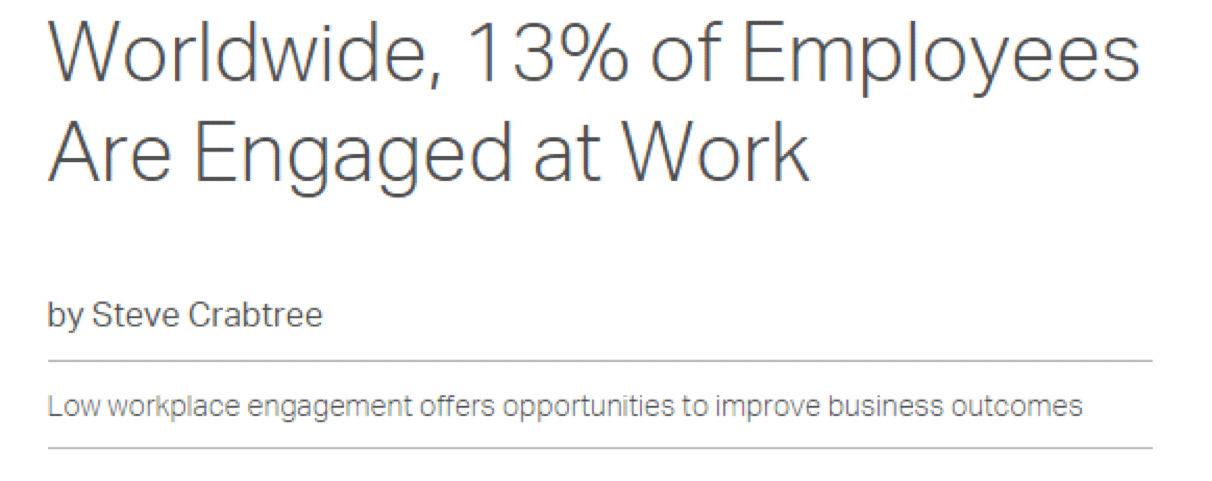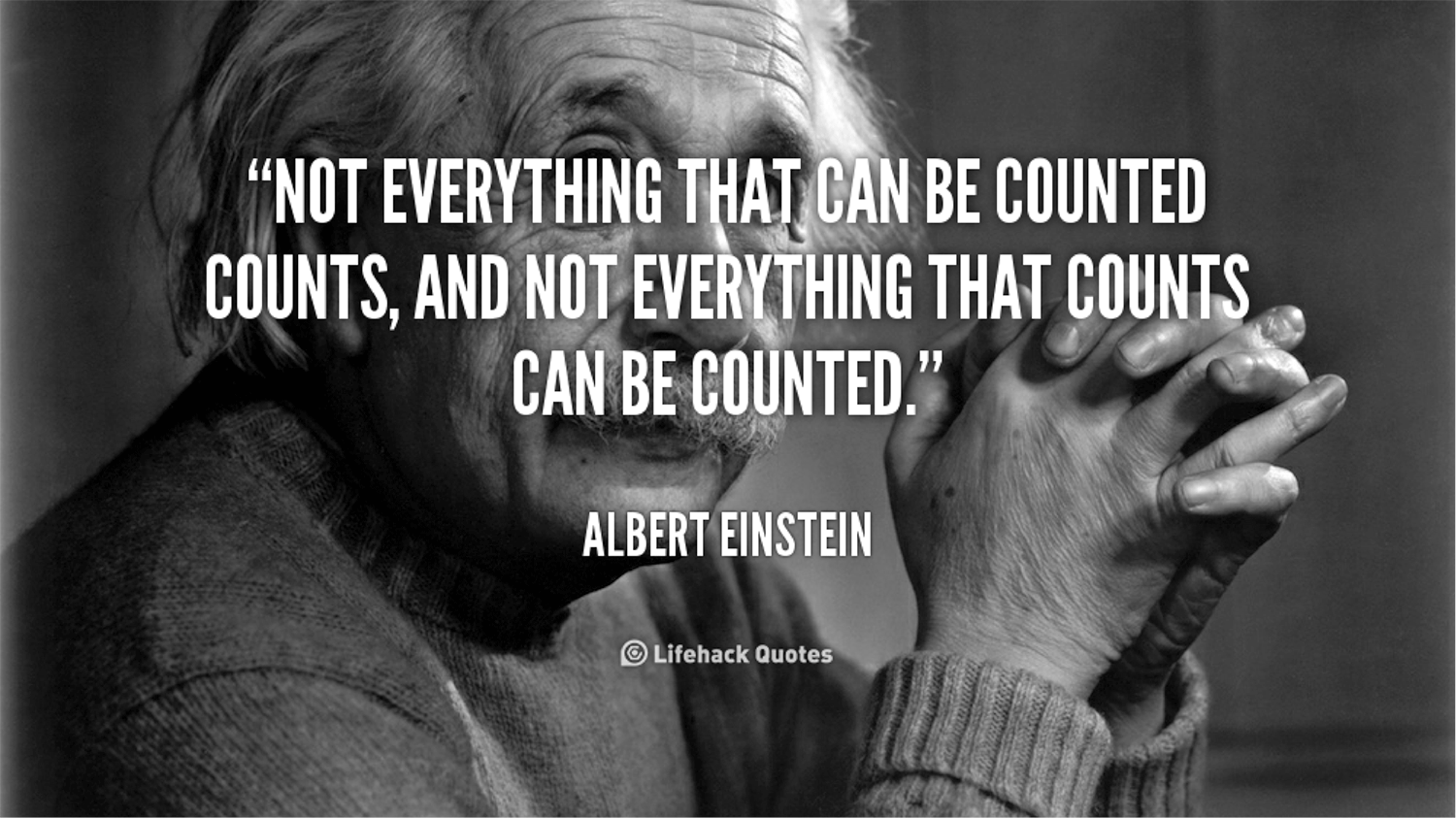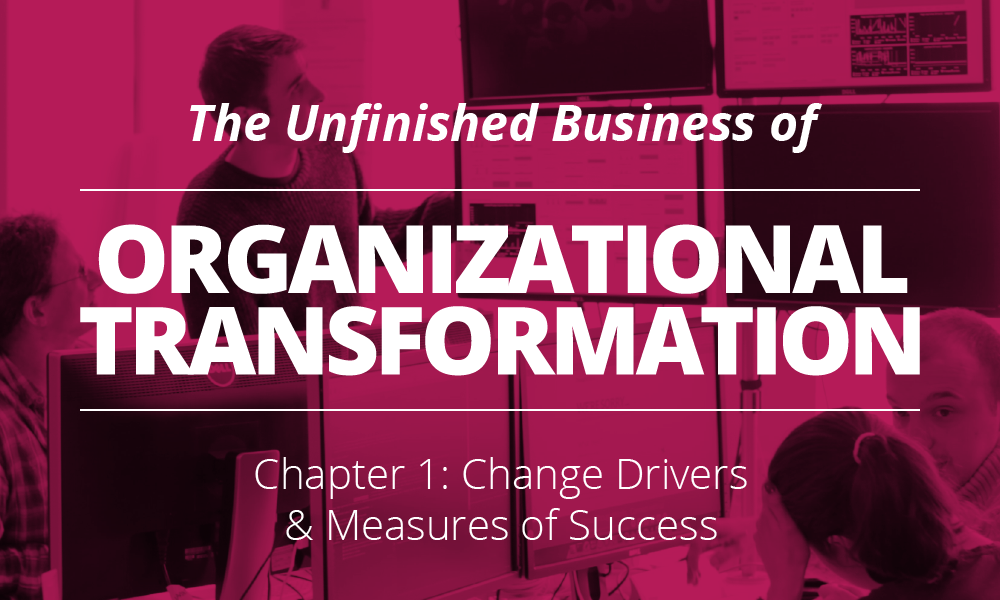
The Unfinished Business of Organizational Transformation

Many large, traditional organizations and their famously successful leaders have embarked on ambitious missions to "create, operate and trade" new businesses to compete with disrupters in an ever-changing economy. These organizations establish corporate venture funds, create internal accelerators or incubators, partner with or spin up innovation labs, and hire big names from Silicon Valley hoping they’ll sprinkle some magic dust on the company and reclaim the glory they once achieved.
Some of these organizations even recognize that “technology innovation” alone won’t make the company successful and invest in internal organizational change initiatives (a.k.a. organization transformation). The goal is to restructure the organization to elevate their workforce and embrace rapid pace of change. Management gurus and globe trotting experts are also reinforcing the need for such seismic shifts in organizational structure and processes as essential ingredients to compete in the 21st century.
John Kotter wrote a seminal paper on “Leading Change” back in 1996. He highlighted that only 30% of change initiatives are actually ever successful. Almost 20 years after and thousands of papers and books later, the success numbers on change programs have not improved much.
At best, such change initiatives result in a dissatisfied workforce and unnecessary confusion. At worst these initiatives are poorly implemented and result in bad strategic decisions that can wipe business units. Either way, we are left with the unfinished business of organizational transformation.
Strategic organizational shifts cannot happen without a shift in organizational culture. Echoing the sentiments of Jason Fried, Founder of Basecamp and author of REWORK, culture is not created, it happens as a result of behaviors exhibited by the teams and individuals in an organization. Additionally, culture shifts aren’t achieved by bringing in a couple of foosball tables and a fridge full of snacks into the office.
We strongly believe that what is holding back these transformations from success is a lack of commitment needed to usher in a change of culture. Culture is created and solidified over time through expressed actions and reactions and not through cooked up, generic sounding mission statements disconnected from real behaviors. Most of these transformations intend to affect change through assessments, recommendation checklists and ticking boxes; they fail to address the legacy budgetary procedures, management and hiring constructs, and performance evaluation processes. This inference is based on our cumulative experiences (20+ years) and informal interviews with many colleagues and clients engaged in change management.
Over the next few weeks, we are going to share our insights on organizational change management — the drivers, anti-patterns and signals to be cognizant of and to address early on. Most of the stories are from personal experience and modern media; it would be great to hear from readers on their perspectives.
Change Drivers: Why is there a such a deep desire to change in the first place?
Changing an organization is a bit like doing a 180 on a cargo ship; it’s slow, expensive, and results may not actually be evident until you’re fully committed. When you decide to change just one part of an organization, you end up optimizing locally while creating adverse effects in other parts of the organization—even if you didn’t intend to. There is no such thing as changing just one part of the business —usually interconnectedness within the organization means everything changes as a result of transformation (or you end up with an even more siloed business).
For all these reasons, it’s important for organizations to consider why there exists a desire to change in the first place. Change for the sake of change can result millions of dollars lost, confusion amongst employees, and a culture that’s in more disarray than before any change initiative.
Here are a few different reasons why organizations initiate a large scale change program — in most cases all or combination of them are true.
1. Create agile business constructs to embrace disruption for a better future
Very recently, an executive vice president of a large financial services company told me over lunch:
“We are slow in decision making...we are too consensus driven and find it hard to make decisions laden with uncertainty. We fear failure and keep on delaying decisions till we get hit in the head by our competitors. Our business processes are too slow to take advantage of any new opportunities. We need to transform...”
The digital fueled future for this company and many such large companies are fraught with uncertainty. Volatile demand trajectory, complex interdependencies across channels and ambiguous alternatives are not business as usual for enterprises optimized for efficiency. Most large and small organizations want to be able to quickly embrace the disruptive future that is being constantly shaped and reshaped by technology and changing global demographics. It’s extremely difficult to do so with their existing organizational structure and processes. The march to create “agile” businesses that can respond to dynamic market conditions is a potent driver for organizational change.

[Image: Teams working on a technology transformation initiative sponsored by the UK government.]
2. Refocus the organization to be customer centric
The concept of a customer-centric organization has been around for some time, but traditional organizations are realizing that there is a big difference between talking the talk (about customer centricity) and actually walking the walk. Just focusing on call center experience and publishing infographics on customer commitment are not sufficient to win critical mindshare in this new economy of digitally empowered customers. Today’s customers are few clicks or an app download away from trying new services and switching several years worth of loyalty. The entire organizational structure needs to be reimagined to better deliver digital services to customers of today and tomorrow — anytime and anywhere. Renewed focus on delighting customers has become a core driver for change initiatives in many large organizations.
Poland-based Idea Bank SA recently launched an on-demand secure multi-functional mobile ATM and depository service, free of charge for the banks’ small/medium enterprise (SME) customers. The entire service is housed in a BMW i3 driven by a trained bank employee. To put into practice such new methods to delight customers demands a change in the organizational structure and processes. In order to better serve their customers, leadership needs to focus on customer outcomes as a way to restructure themselves and the portfolio of work.
 [Image: With customer centricity becoming mainstream, such dashboards for tracking customer satisfaction and experience are becoming a norm in large businesses.]
[Image: With customer centricity becoming mainstream, such dashboards for tracking customer satisfaction and experience are becoming a norm in large businesses.]
3. Innovation as a strategy
The need for traditional and new companies to innovate continually is a well-accepted truth by industry leaders. Most large companies thrived in the 1990s and early 2000s by focusing on cost control and operational efficiency. The successful leaders at these firms drove a culture of reliability by optimizing for operational excellence over variability. The leaders at these enterprises must pivot in their thinking today to lead with innovation; if they want to be an organization that lives and thrives on innovation, they’ll have to transform into a company that is willing to invest in many small ‘bets’ using data and learnings to inform continued investment (or divestment).
An example of such large scale transformation focused on innovation is evident in GE the entire organization is on a change trajectory to constantly experiment, learn, and iterate, while keeping customer value at the core of everything they do. Adobe is another poster child for using innovation as a lever to drive organizational change; rather than spinning up a separate innovation arm or outsource the activity itself, Adobe is betting on it’s employees to organically generate ideas that could be proved out and invested in. Such a bold strategy demands for a change in the organizational structure.
4. Energize the workforce / Become a destination employer
While there is an increased focus on customer centricity and innovation, business leaders also recognize that their organizations are only as strong as the well-being and motivation of their workforce. Not all change initiatives have to be market or externally focused.
[Image: Sourced from Gallup website that published the Gallup's 2013 State of the Global Workplace report highlight that only 13% of the employees are engaged at work.]
Legacy constructs that enforce bureaucracy through command-and-control structures and foster waterfall development with gated handovers between organizational silos are pervasive across large corporations. These processes were built to mitigate risk for an environment that doesn’t exist today. They end up creating disengagement with employees and disenchantment with employers. With this in mind, many companies are looking for ways to improve employee participation in the organization’s strategy and in turn, increase retention rates and hold on to the great people they’ve already invested in. This results in a radical shift in the existing work constructs and calls for an organization-wide change initiative.
GE CEO Jeff Immelt recently highlighted the importance of empowering employees to enable decentralized decision making for rapid responses in an interview with McKinsey. He pointedly stated, “You are not in the control business. You are in the risk-reward business.” — especially while running a large global corporation. Leaders in companies like Warby Parker and Zappos consistently focus on creating an environment that allow their employees to do the right thing for their customers.
Additionally, most organizations are finding themselves involved in the so-called “war for talent” for T shaped employees who can help move the organization forward by adopting an experimentation mind-set in a complex global economy. Companies simply can’t find enough skilled talent to fill their many open positions. This abundance of demand (from employers) and lack of supply has forced companies to reimagine and reshape their current organizational structures to become more attractive to future employees. Many organizations are restructuring to create vibrant environments where employees don’t live to work, they work to live.
Measures of success: How do we know that we changed?
The transformation is going to change everything about an organization — how employees deliver work, how new people are hired, how funds flow within the organization, how new products are created and how the customer thinks about doing business with the organization. So introducing change and transformation into a large mature company is not for the faint hearted as everyone involved in it keeps on asking: “How do we know that we have changed?” Here comes the answer, but first let’s agree on what a transformed organization will be.
We believe that it doesn’t matter whether the change program is initiated by HR, Marketing, Technology or Strategy, what matters is that the entire organization is culturally aligned to become a responsive organization. For us the only measure that really matters for such change initiatives is becoming a responsive enterprise over the course of the transformation.

[Image: Fun fact: Einstein made a case against traditional KPIs long back.]
Responsive organizations have an operating model that is significantly different from 19th century management practices and can thrive in the face of uncertainty as lean, focused, continuous learning machines with a bias for action and a tolerance for calculated risks. Warby Parker, Valve, Amazon, LinkedIn, Netflix, Xiaomi, Lending Club, Uber, and GitHub are examples of a few such responsive enterprises that are disrupting the way we see, play, buy, connect, entertain, communicate, transact, transport and code. Large organizations involved in a transformation should not declare premature success unless they become adequately responsive.
| Mercantile | Industrial | Technology Age | Digital Age | |
| Tech Landscape | Absence of Information Technology |
|
|
|
| Process Landscape | Lack of best practices |
|
|
|
| Decision Landscape | Discreet and individual decision making |
|
|
|
A responsive organization is one that can adapt rapidly to the pace of change and deliver new customer-focused products and services with a motivated workforce, on-demand. Such an organization is capable of leveraging short opportunity cycles and creating wonderful businesses out of simple concepts and use evidence-driven judgment to scale, pivot or kill initiatives.
These organizations, those that truly understand their motivations for change, are capable of defining targeted success-metrics to better understand the change process. These metrics are often uncomfortable and divergent from the usual measures and do take time to flesh out. However, well thought out measures that are tied to the change program’s objectives will go a long way in validating assumptions and communicating success.
- What did we learn about our customers experience during the change?
- What did we learn about our internal processes to serve our customers?
- What did we learn about our markets and how we make money?
- Did we identify and remove impediments to innovate and/or better serve customers?
Admittedly though, moving to such a 21st century organizational construct is hard to measure quantitatively and can be more easily sensed and communicated (both inwards and outward) qualitatively driven by insights gained. Forrester’s Customer Experience expert Kerry Bodine purposefully tells the story of how Jetblue uses three different kinds of measures (prescriptive, descriptive and outcome) to better understand customer behavior and create appropriate interventions as a way to manage organizational change.
Inspired by our colleague and change guru Gary O’Brien’s seminal piece on measuring value, we believe that the true value of such change can be sensed rather easily if everyone involved in the initiative is able to answer the following questions:
- Are we improving? (better than what we were before)
- Are we delivering per expectation? (kept our commitments to our customers and employees)
- Are we considered as valuable? (customers and employees want more of us than ever before)
- Are we contributing back to the society? (what is our overall contribution back to the society)

Preview to the upcoming articles in the series
Successful change initiatives demand a whole host of factors to be successful - including but not limited to leadership structures and behaviors, performance management, financial processes, definition of work constructs, customer orientation of employees, integration of change office with the performance engine, creating an environment that supports validity over reliability, training and experiential learning and more. Over the next chapters we will dive into the anti-patterns we have observed in these areas. Wherever applicable we will suggest what we have seen been applied as an antidote and how it worked out (good, bad and ugly). In the meantime, we are eager to hear from you (the readers), what do you think are the true drivers and measures of success for organizational change.
Disclaimer: The statements and opinions expressed in this article are those of the author(s) and do not necessarily reflect the positions of Thoughtworks.
















